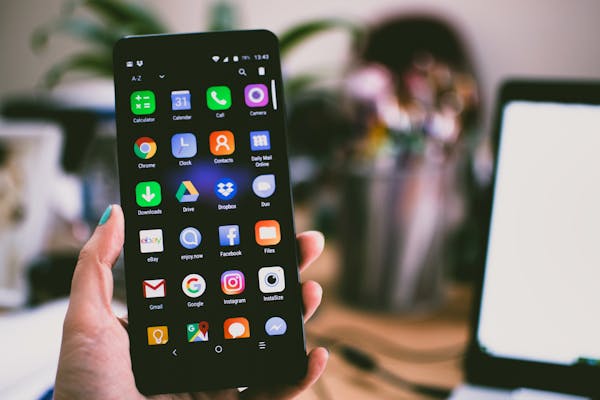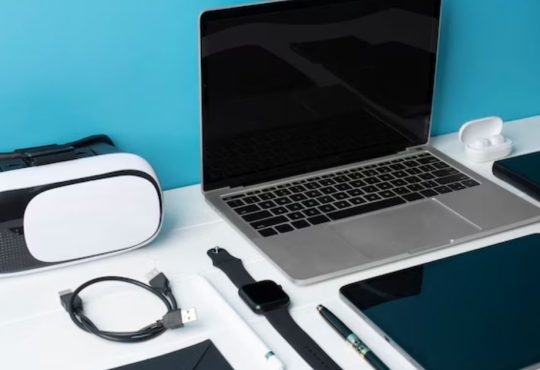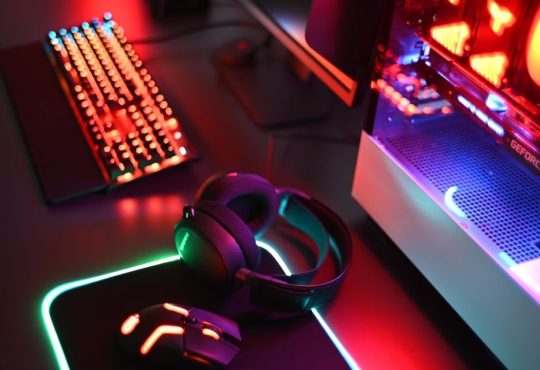In the ever-evolving world of technology, the smartphone has become an essential tool in our everyday lives. From communication to entertainment, social networking, and productivity, these powerful devices have transformed how we connect, work, and play. As smartphones become more advanced, choosing the right one can be a daunting task. Whether you’re upgrading your current device or buying a new one, it’s essential to understand the features, specifications, and your personal needs to make the best choice. This comprehensive guide will walk you through the key aspects to consider and offer valuable tips on choosing a smartphone that aligns with your lifestyle and preferences.

Understanding the Smartphone Ecosystem
Before diving into the specifics of smartphone features, it’s important to understand the broader ecosystem. When we talk about smartphones, we’re generally referring to devices running one of two main operating systems: Android and iOS.
- Android: Developed by Google, Android is an open-source operating system used by a variety of manufacturers such as Samsung, Google, Huawei, OnePlus, and more. Android offers greater customization options, and there are numerous phones available at different price points.
- iOS: Apple’s proprietary operating system for its iPhones, iOS is known for its intuitive interface, seamless integration with other Apple products, and a robust ecosystem of apps. However, iPhones tend to be more expensive, with limited customization compared to Android devices.
Each ecosystem has its strengths, and your decision might ultimately depend on whether you prefer the flexibility of Android or the simplicity and consistency of iOS. When considering the tips on choosing a smartphone, always start by identifying your preferred platform.
Key Factors to Consider When Choosing a Smartphone
a. Performance: Processor and RAM
The performance of a smartphone is primarily determined by its processor (often called the “chipset” or “SoC”) and the amount of RAM it has.
- Processor: The processor is the brain of your smartphone. High-end smartphones typically use top-tier processors such as the Qualcomm Snapdragon 8 series (Android) or Apple’s A-series chips (iPhones). If you’re looking for a device for gaming, multitasking, or running heavy apps, opt for a phone with a powerful processor.
- RAM: RAM (Random Access Memory) allows your phone to run multiple apps smoothly at the same time. A higher amount of RAM ensures better multitasking. For most users, 6GB to 8GB of RAM is more than enough, but 12GB or more can be found in high-end devices aimed at gamers or professionals.
b. Display: Screen Size and Quality

The display is one of the most important aspects of any smartphone because it’s what you’ll be interacting with most. Key factors to consider include:
- Screen Size: Screen sizes typically range from 5.5 inches to over 6.7 inches. If you watch a lot of videos, play games, or use your phone for work, you might prefer a larger screen. However, larger screens can make the phone bulkier and harder to handle with one hand.
- Display Quality: Look for a screen with Full HD (1080p) resolution or higher. OLED or AMOLED screens offer better color accuracy, deeper blacks, and higher contrast compared to LCD displays. Many premium smartphones also offer high refresh rates (90Hz, 120Hz, or even 144Hz), making animations and scrolling smoother.
c. Battery Life: Capacity and Charging
Battery life is a critical factor, especially if you’re on the go frequently. The battery capacity is measured in mAh (milliampere-hour). The higher the mAh, the longer the battery can last, but it also depends on the phone’s software optimization.
- Battery Capacity: A battery of 4,000mAh to 5,000mAh is typically sufficient for a full day of use. If you’re a power user or frequently travel, opt for a phone with a larger battery.
- Fast Charging: Many modern smartphones offer fast charging features, which can charge the battery to 50% or more in under 30 minutes. Wireless charging is also available on many high-end smartphones, adding convenience.
d. Camera: Megapixels and Features

For many people, the camera is one of the most important factors in choosing a smartphone. While megapixels (MP) matter to some extent, other factors like sensor size, aperture, and software optimization play significant roles in determining camera quality.
- Number of Cameras: Smartphones today come with multiple cameras, including ultra-wide, telephoto, and macro lenses. More lenses offer versatility in photography, but quality is more important than quantity.
- Camera Features: Features like Night Mode, optical image stabilization (OIS), and AI enhancements can drastically improve image quality, especially in challenging lighting conditions.
e. Storage: Internal and Expandable
Storage is essential for storing apps, photos, videos, and other data. Most smartphones come with a base storage option of 64GB, but higher-end models offer 128GB, 256GB, or more.
- Internal Storage: For most users, 128GB is the sweet spot, but if you take a lot of photos or videos, especially in 4K resolution, consider 256GB or higher.
- Expandable Storage: Some Android phones offer expandable storage via microSD cards, which can be a cost-effective way to increase storage. iPhones, on the other hand, do not support expandable storage.
Operating System Updates and Software Support
When buying a smartphone, it’s crucial to consider the manufacturer’s track record for providing software updates. Regular updates ensure your device remains secure and can access new features. While iPhones typically receive software updates for up to 5 years, Android phones may have a shorter update window depending on the manufacturer. Google’s Pixel phones are among the best for receiving timely Android updates.
5G Connectivity: Future-Proofing Your Device
As 5G networks become more widespread, many new smartphones come with 5G support. While 5G isn’t essential for everyone right now, it offers much faster data speeds than 4G and is great for future-proofing your device.
Build Quality and Design: Durability and Style
Smartphones come in various designs, from sleek all-glass builds to more rugged, plastic-bodied devices. Some phones offer features like water resistance (IP ratings), which protect against spills and splashes. Consider the following:
- Build Material: Premium smartphones often use glass and metal in their construction, while budget devices may use plastic.
- IP Ratings: If you’re prone to accidents or work in challenging environments, look for a phone with an IP67 or IP68 rating for water and dust resistance.
Price: Setting a Budget
Perhaps one of the most critical factors in choosing a smartphone is the price. Smartphones come in three primary price ranges:
- Budget Phones (below $300): These phones offer basic features and performance but are suitable for everyday tasks like calling, texting, and light browsing.
- Mid-Range Phones ($300 – $700): Mid-range phones strike a balance between performance and price. They often include premium features like good cameras, fast processors, and large displays.
- Flagship Phones (above $700): Flagships offer the best of the best, with top-tier cameras, processors, displays, and build quality. However, they come at a premium price.
Brands to Consider: Reputation and Reliability
The brand of the smartphone can impact its quality, support, and resale value. Some of the most trusted smartphone brands include:
- Apple: Known for premium design, long-term software support, and ecosystem integration.
- Samsung: Offers a wide range of phones, from budget to flagship, with excellent displays and cameras.
- Google: The Pixel lineup is known for pure Android experiences and timely updates.
- OnePlus: Offers flagship-level performance at lower prices, with a focus on smooth software experiences.
Environmental Impact and Sustainability
With the growing focus on sustainability, many consumers are concerned about the environmental impact of their smartphone choices. Some brands, like Apple, have made strides in using recycled materials and reducing carbon footprints during manufacturing.
The Role of Accessories: Cases, Chargers, and More
Don’t forget to consider the cost of accessories. Many new smartphones no longer include chargers or headphones in the box, so you may need to budget for additional purchases.
Tips on Choosing a Smartphone
- Performance If you’re not a heavy user, a mid-range phone with a decent processor and 4GB to 6GB of RAM will work just fine for everyday tasks like browsing, social media, and watching videos.
- Display If you spend a lot of time streaming content or playing games, consider a phone with an OLED display and a refresh rate of at least 90Hz for a more immersive experience.
- Battery Life Look for a phone with fast charging support and at least a 4,000mAh battery if you want to ensure your device lasts throughout the day without constant recharging.
- Camera If photography is a priority, look beyond megapixels and focus on phones with a well-rounded camera system that includes features like OIS, Night Mode, and good image processing software.
- Storage If you frequently store large files or take high-resolution videos, opt for at least 128GB of storage or choose an Android phone with microSD support for extra flexibility.
- Operating System Updates and Software Support If long-term software support is essential, consider purchasing a phone from a brand known for consistent updates, such as Apple, Google, or Samsung.
- 5G Connectivity If you plan to keep your phone for several years, consider opting for a model with 5G support to take advantage of faster network speeds as they become more common.
- Build Quality and Design Choose a phone with water resistance if you want extra peace of mind, especially if you’re frequently outdoors or near water.
- Price Set a budget before shopping and prioritize the features that matter most to you. Mid-range phones today offer excellent value and often have many features of flagships at a fraction of the cost.
- Brands to Consider Stick to reputable brands with a good track record of software updates and customer service for a more reliable long-term experience.
- Environmental Impact and Sustainability If environmental impact is important to you, look for brands that prioritize sustainability, use eco-friendly materials, and have robust recycling programs.
- Role of Accessories Invest in a high-quality case and screen protector to prolong the lifespan of your phone and avoid costly repairs.
Choosing the right smartphone requires a careful balance between your budget, personal needs, and the features that matter most to you. Whether you prioritize camera quality, battery life, or performance, this guide offers key tips on choosing a smartphone that will help you navigate the crowded market and find a device that suits your lifestyle. By understanding important factors like processor speed, camera quality, battery capacity, and software support, you can make an informed decision and enjoy your new smartphone for years to come.





